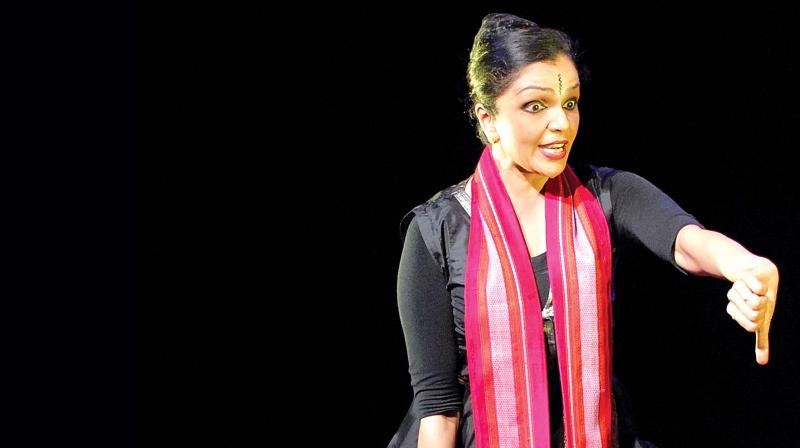Portraying the unseen shades
Classical dancers Anita Ratnam, Sharmila Biswas and Geeta Chandran talk about their upcoming performance Ah Su Ra.;

When it comes to the Hindu epic Ramayana, everyone usually talks about Rama and Sita, the bond they share, the vanvas and how everyone celebrates Rama. There are many characters left unnoticed, that have deeper stories unexplored, which the country’s top classical dancers Anita Ratnam, Sharmila Biswas and Geeta Chandran will narrate in their upcoming Ramayana Triptych.
Titled Ah Su Ra, the dance performances will be on three characters Ahalya, Surpanakha and Ravana. While Anita will describe the story of Ahalya through contemporary dance, Sharmila and Geeta will unfold the stories of Surpanakha and Ravana through Odissi and Bharatanatyam respectively.
“We were doing performances individually about different characters of Ramayana and this collaboration was organic,” begins Anita Ratnam, talking about how the trio happened. Each performance will be about 20 minutes long with a narrator also explaining the audiences about the story.
When questioned about the choice of the three uncommon characters, Anita responds, “Ahalya, Surpanakha and Ravana are three dark characters. We don’t even name our kids with these names because we’ve been told only about their negatives. So we wanted to dig deep and did a lot of research about these people. Rama is praised so much but he questioned his wife about chastity. Ah Su Ra will be a performance where three women portray three characters and the goal is to make the audience understand their importance.”
About being Ahalya she says, “Her birth and marriage were not her decisions. The wife of Gautama Maharishi, she she was seduced by Indra, cursed by her husband for infidelity, and liberated from the curse by Rama, according to the scriptures. It’s very interesting to tell her tale.”
The dancers also state that the aesthetics, research and music are very important to keep the dance alive. The technical producers in-charge of the lighting, music and costumes contribute a lot to the event. There are also researchers who work just on the concept.
On essaying the role of Ravana and the challenges in it, Geeta says, “The way Valmiki describes Ravana, the latter is so poetic. He describes the beauty of Sita and it’s amazing. He’s also a Shiv bhakth. In the choreography, I’ve added a lot of inputs. Once I met a sculptor who made a nine-headed Ravana. On being questioned he said that the 10th head is at the back for him to have a 360° view. It was such a simple thing, but it was a value addition to the performance as well.”
Sharmila talks about the highlight of her Odissi dance piece on Surpanakha saying, “There is an old tribal language Sabar which will be used in the piece, apart from Oriya and Sanskrit. That is a monologue Surpanakha speaks to herself in Sabar. Her story is never told from her perspective in any texts.”
All three agree on one aspect when it comes to putting up a triptych — the trust.
They unanimously say that they respect each others’ works and trust their individuality and their experience in the industry. They reveal, “When artistes collaborate, there’s much more than just the performance — a lot of new ideas are born.”
(Today, 7 pm, at Krishna Gana Sabha)

